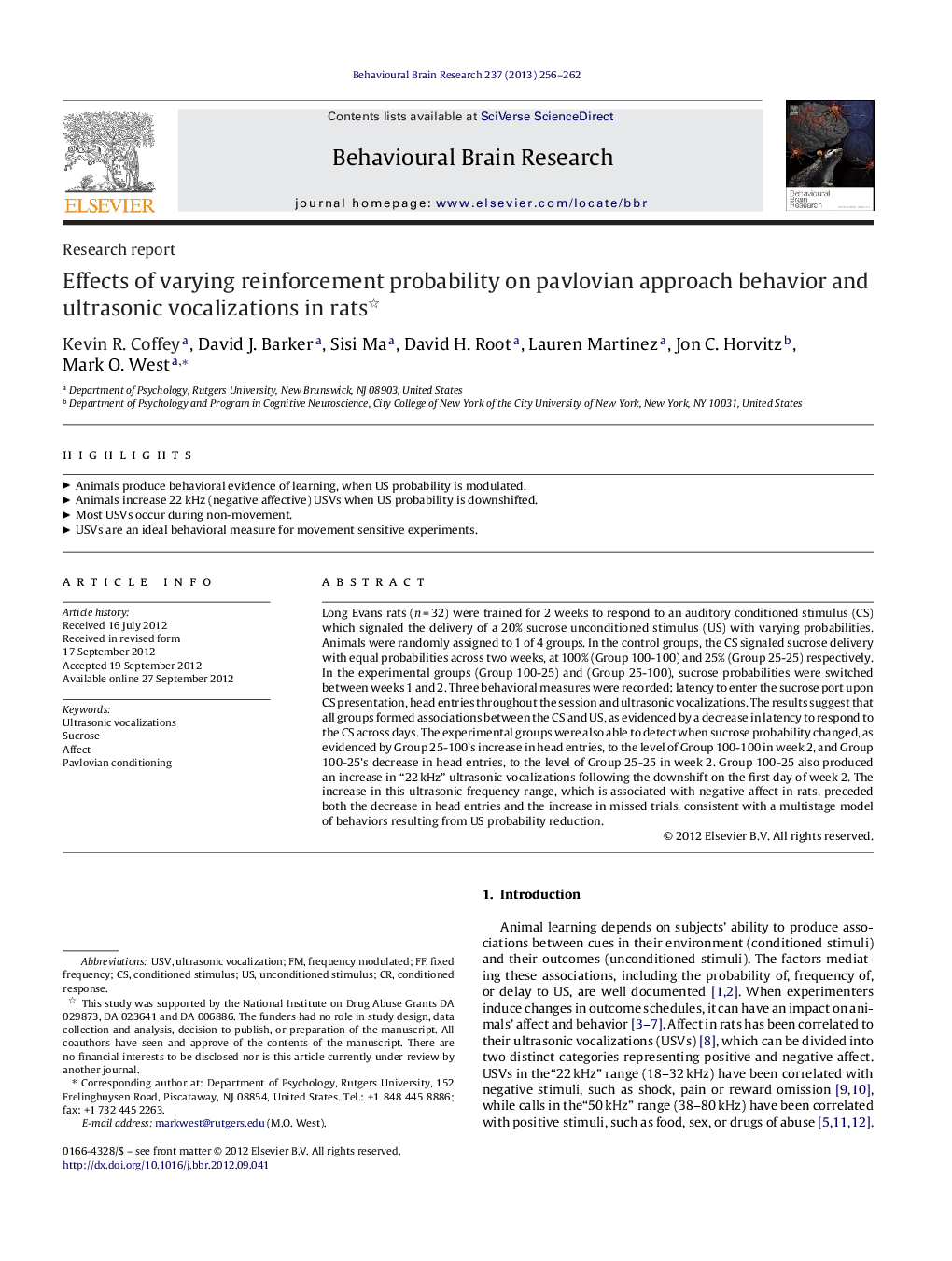| Article ID | Journal | Published Year | Pages | File Type |
|---|---|---|---|---|
| 6259362 | Behavioural Brain Research | 2013 | 7 Pages |
Long Evans rats (n = 32) were trained for 2 weeks to respond to an auditory conditioned stimulus (CS) which signaled the delivery of a 20% sucrose unconditioned stimulus (US) with varying probabilities. Animals were randomly assigned to 1 of 4 groups. In the control groups, the CS signaled sucrose delivery with equal probabilities across two weeks, at 100% (Group 100-100) and 25% (Group 25-25) respectively. In the experimental groups (Group 100-25) and (Group 25-100), sucrose probabilities were switched between weeks 1 and 2. Three behavioral measures were recorded: latency to enter the sucrose port upon CS presentation, head entries throughout the session and ultrasonic vocalizations. The results suggest that all groups formed associations between the CS and US, as evidenced by a decrease in latency to respond to the CS across days. The experimental groups were also able to detect when sucrose probability changed, as evidenced by Group 25-100's increase in head entries, to the level of Group 100-100 in week 2, and Group 100-25's decrease in head entries, to the level of Group 25-25 in week 2. Group 100-25 also produced an increase in “22 kHz” ultrasonic vocalizations following the downshift on the first day of week 2. The increase in this ultrasonic frequency range, which is associated with negative affect in rats, preceded both the decrease in head entries and the increase in missed trials, consistent with a multistage model of behaviors resulting from US probability reduction.
⺠Animals produce behavioral evidence of learning, when US probability is modulated. ⺠Animals increase 22 kHz (negative affective) USVs when US probability is downshifted. ⺠Most USVs occur during non-movement. ⺠USVs are an ideal behavioral measure for movement sensitive experiments.
